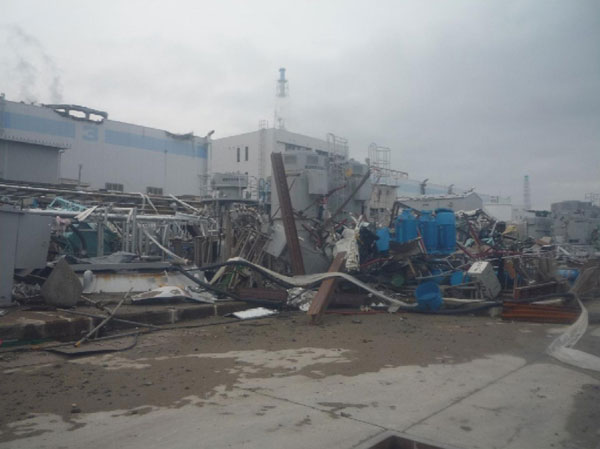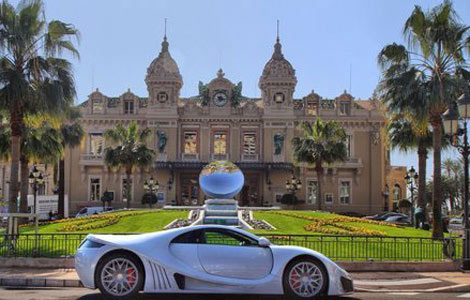Asia
Asia nuclear reactors face tsunami risk
Updated: 2011-04-19 10:30
(Agencies)
JAKARTA, Indonesia - Asia, the world's most seismically charged region, is undergoing a nuclear renaissance as it struggles to harness enough power for its huge populations and booming economies.
But Asian countries frantically building coastal facilities have made little use of new science to determine whether these areas are safe. At least 32 plants in operation or under construction in Asia are at risk of one day being hit by a tsunami, nuclear experts and geologists warn.
|
 The crippled Fukushima Daiichi Nuclear Power plant is seen in Fukushima Prefecture in this undated handout photo released by Tokyo Electric Power Co.(TEPCO) April 14, 2011. [Photo/Agencies] |
|
||||
"It's pretty astonishing to a lot of us that so little priority is placed on the work we do," said Kerry Sieh of the Earth Observatory of Singapore, who has studied and written about the Manila Trench, where pressure has been building for millions of years.
He is among those who say it is only a matter of time before it snaps.
In assessing the tsunami risks to nuclear power stations, scientists focus on their proximity to subduction faults, volcanoes and areas frequently hit by underwater landslides, all of which can trigger seismic waves. Because giant tsunamis recur, they also look at historic and scientific records, going back up to 4,000 years if possible.
The greatest threat comes from the subduction faults crisscrossing the globe, some far from the minds of policymakers, nuclear industry officials and the public because it has been so long since they exploded.
In places where tectonic plates that form these faults are "coupled," or stuck together, the stresses are the biggest, especially if centuries have passed without a major energy-releasing earthquake.
When the strain eventually forces one plate to pop up or dive under the other, the resulting temblor can spawn mammoth waves like the one that struck off Japan's northeast coast on March 11, triggering the nuclear crisis that has carried on for more than a month.
While there is some "coupling" at the Manila Trench, there is debate about just how much. Scientists say more research needs to be done to determine if pressure is building and along which segments.
Science has come a long way since the first nuclear plant was built in the 1950s.
By carbon dating the ash, pollen or other organic material attached to tsunami sand deposits swept inland with the giant walls of water, geologists can determine to the decade, and sometimes even the year, when the wave hit and how big it was when it roared ashore.
That's important because some tsunamis only strike once a millennium.
"This is the smoking gun, the calling card of the tsunami, and when you find it, especially far inland, you know that this is an area that has been hit with a large tsunami in the past," said Bruce Jaffe, an oceanographer and tsunami expert at the US Geological Survey.Such research is considered essential in deciding where to locate nuclear power stations because most are built along seashores, rivers and lakes to supply the massive amounts of water needed to keep their reactors from overheating. Even plants perched on hills or cliffs may be in danger because the pipes used to carry up water used for cooling could be damaged in a powerful tsunami.
Japan, which sits atop three highly active tectonic plates with 54 reactors dotting its coastlines, has probably done the most when it comes to looking back in history.
Even so, Tokyo Electric Power Co., which runs the hobbled Fukushima plant, did not factor geologic evidence of the giant Jogan tsunami of 869 AD. into its preparedness. When the tsunami hit last month, it unleashed waves up to 42 feet (14 meters) high, swamping the backup generators needed for cooling.
The same region was also walloped twice before, once around 140 BC and again sometime between 600 BC and 900 BC, scientific studies revealed.
E-paper

Han me downs
Traditional 3,000-year-old clothes are making a comeback.
Preview of the coming issue
Reaching out
Fast growth fuels rise in super rich
Specials

25 years after Chernobyl
Belarus, Ukraine and Russia will mark the 25th anniversary of the nuclear reactor explosion in Chernobyl.

Luxury car show
The world's most prestigious luxury, sports cars and supercars are displayed in Monaco.

Peking Opera revival
Traditional opera is enjoying a revival in Beijing thanks to some modern touches.




